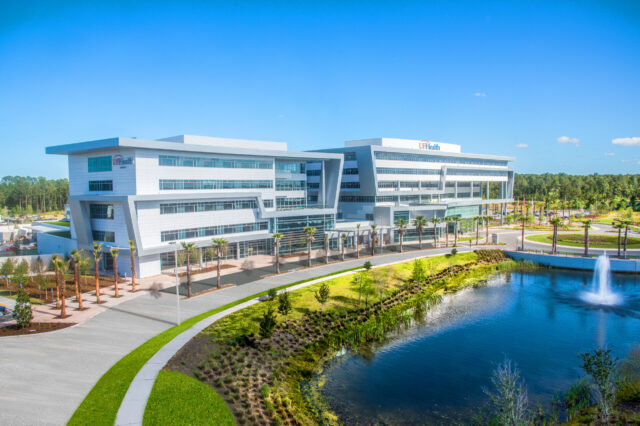Doctor who introduced 3D breast imaging to First Coast is bringing it to UF Health North

Imagine trying to read a note after a child scribbles over the words.
Now imagine a technology that could take the scribbling away, leaving behind only what you need to read.
That is what 3D breast imaging does that a traditional 2D mammogram can’t. Officially known as tomosynthesis, it provides radiologists a more complete image to work with as they determine whether a mammographic finding is suspicious.
Martha Wasserman, MD, chief of women’s imaging at UF Health Jacksonville and at UF Health North, was the first doctor to bring tomography to Northeast Florida three years ago. She introduced the imaging technique at UF Health’s downtown hospital and Emerson Medical Plaza on the Southside. Now, she’s bringing the same technology to UF Health North in North Jacksonville.
“Our goal is to get everyone into a tomo screening program,” Wasserman said. “Multiple studies show that tomo significantly increases the sensitivity of detecting invasive breast cancer, while decreasing the number of people recalled from their screening mammogram.”
She expects tomosynthesis to one day be the standard for breast imaging.
Unlike a traditional 2D mammogram, which takes digital images from two views, 3D tomosynthesis takes multiple images using a camera that’s set in a mechanical arm above the patient. It sweeps in a shallow arc during the exam, taking about the same amount of time as a traditional mammogram. Cross-sectional images of the breast are then generated, allowing the radiologist a clearer view of all the layers in the breast.
Tomosynthesis is particularly effective for women with dense breast tissue. On a 2D mammogram, it could be difficult to distinguish between true abnormalities and superimposed glandular tissue, which can mimic a cancer. This more complex imaging can significantly decrease the potential of return visits and additional mammograms, saving the patient time and unnecessary worry.
In addition to screening and diagnostic mammography, UF Health North’s women’s services department will offer:
- Ultrasound
- Breast MRI (magnetic resonance imaging)
- Image-guided breast biopsies
- DXA bone density scanning
- Radioactive seed localization, which is the placement of radioactive seeds that guide a surgeon during breast surgery
“We will be providing full-service screening and diagnostic breast imaging as well as all image-guided breast procedures and DXA at UF Health North, just as we do currently at the downtown campus,” Wasserman said.
If breast cancer is found, a team of expert physicians will work together to decide the next step.
“At UF Health, we are so fortunate to be part of an outstanding academic multidisciplinary breast health team,” Wasserman explained. “Surgeons, radiologists, radiation oncologists, medical oncologists – every case is reviewed by all of us to determine the best course of treatment.”
Radiologists who review the cases are specifically trained in breast imaging, and a breast imaging navigator is available to guide the patient throughout the treatment process.
If you’d like to come to UF Health North for treatment in women’s services, a referral from your doctor for the specific service you need is required. When you make your appointment, you can indicate that you would like to be seen at UF Health North.